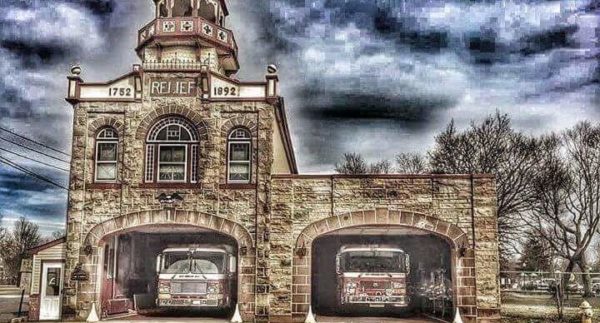The State of New Jersey currently utilizes the 2018 International Fire Code, New Jersey Edition for the enforcement of the fire code.
HOME RESALE INSPECTIONS:
Uniform Fire Code requires before the change of occupancy (home re-sale), the owner shall obtain a Smoke Detector Carbon Monoxide Alarm Certificate (CSDCMAC) in any 1-family or 2-family dwelling unit and also in apartment units. If you live in a home, the homeowner/realtor is responsible for scheduling an inspection. If you live in an apartment, the management company is responsible for scheduling an inspection.
- Operable 10-year battery sealed smoke alarm located on every level of dwelling (5:70-4.19), or *hardwired as required, including the basement.
- Smoke detectors shall be less than 10 years old from date of manufacture date of settlement (closing).
- Operable, labeled and charged Fire Extinguisher. Size 2A:10B:C, no smaller than 2 ½ pounds and no larger than 10 Lbs. Installed with manufacturer provided brackets and the top of the extinguisher not more than 3 feet to 5 feet above the floor. Either installed in the kitchen or within 10 feet of the kitchen area.
- Operable Carbon Monoxide Detector installed in the immediate vicinity of the sleeping areas for all dwellings that contain fuel-burning devices or attached garage.
- House number must be a minimum of 30 inches from the ground and minimum 3 inch numbers that are visible from the road.
- Note: after-market fire alarm/security systems must be able to function with out electricity and meet state fire and building codes.
Smoke Detector Information:
Each level of the dwelling is required to have a smoke detector. The detectors are either battery powered or electric powered, depending on the year the house was built:
- Before 1977: Battery powered detector in hall adjacent to bedrooms.
- 1977 – 1980: Electric powered detector in hall adjacent to bedrooms, battery powered detectors on remaining levels.
- 1981 – 1983: Electric powered, interconnected in hall adjacent to bedrooms and basement, if applicable.
- 1984 – 1990: Electric powered, interconnected detectors on all levels.
- 1991 – 1992: Electric powered, interconnected detectors in all bedrooms, in vicinity of bedrooms and on all levels.
- 1992 – Present: Electric powered, interconnected detectors in all bedrooms, in vicinity of bedrooms and on all levels with battery powered back up
Carbon Monoxide Detector Information:
Carbon Monoxide detectors must be in all dwellings, except those not containing fuel-burning appliances or do not have an attached garage (open parking structure is not an attached garage).
Carbon Monoxide detectors may be 10 year sealed battery powered or plug in type or hard-wired and installed on wall, ceiling or in accordance to manufacturer’s installation instructions.
Fire Extinguisher Information:
The Uniform Fire Code requires fire extinguishers be installed upon the sale of property or change of occupancy.
- At least one portable Class ABC fire extinguisher shall be installed in all one and two family detached dwellings and in apartment units.
- Extinguisher shall be listed, labeled, charged and operable.
- Extinguisher shall be no smaller than 2 ½ pounds and no larger than 10 Lbs.
- Extinguishers shall be installed with manufacture brackets and the top of the extinguisher not more than 3 feet to 5 feet above the floor, and the operation instructions must be clearly visible.
- Extinguisher must be in a readily accessible area, free from blocking by furniture, storage, equipment or other items.
- Extinguishers shall be located with in 10 feet of the kitchen.
- Extinguishers shall have an owner’s manual or written information regarding the operation, inspection, and maintenance of the extinguisher.
